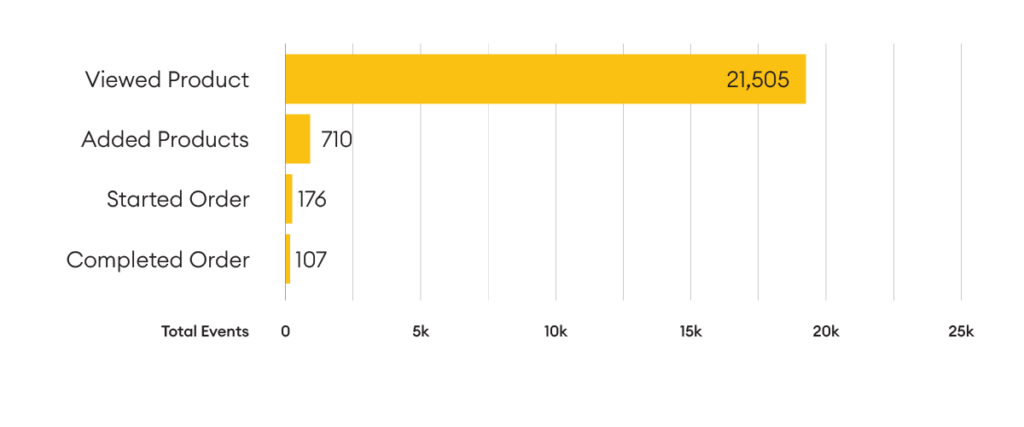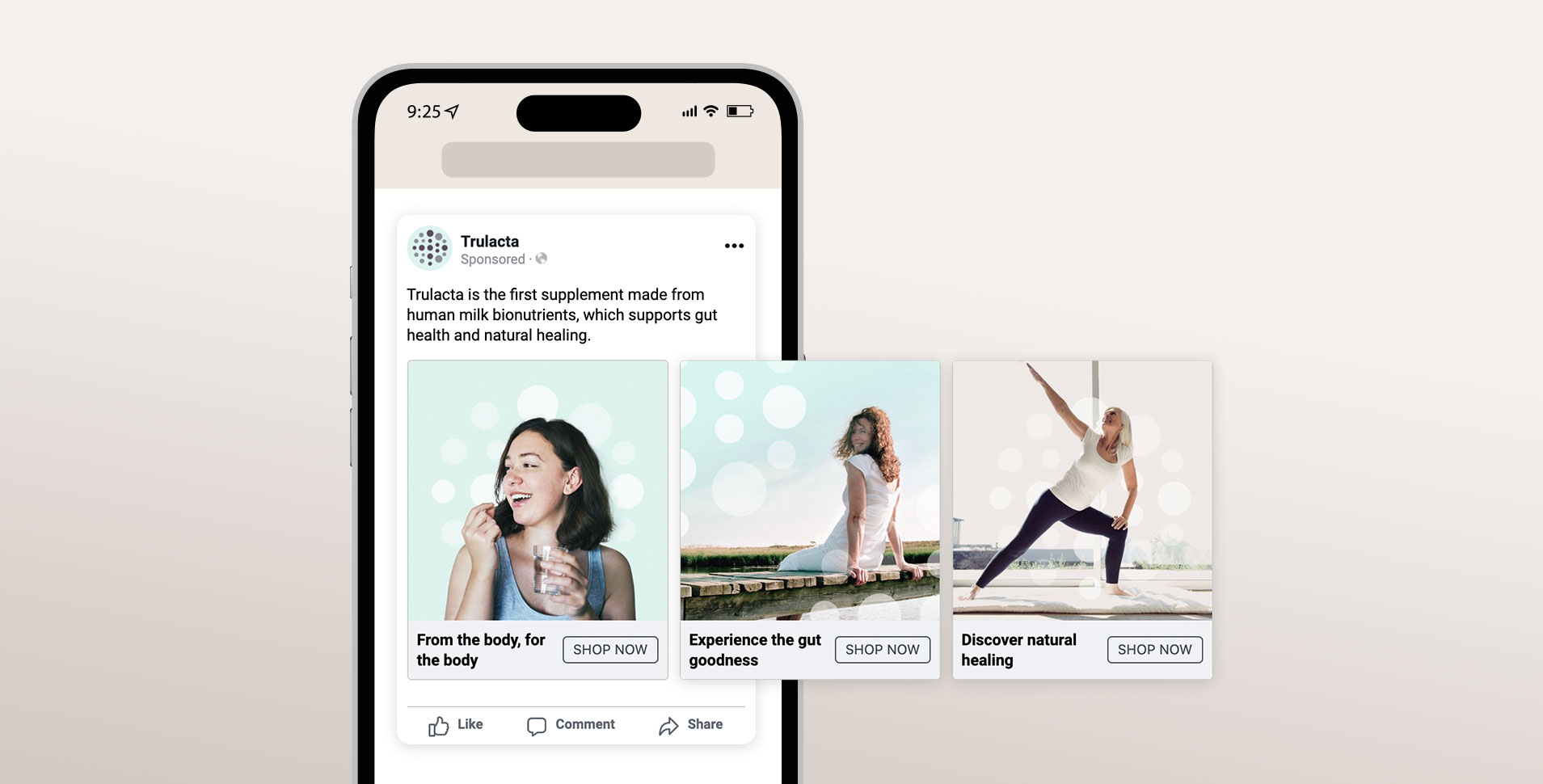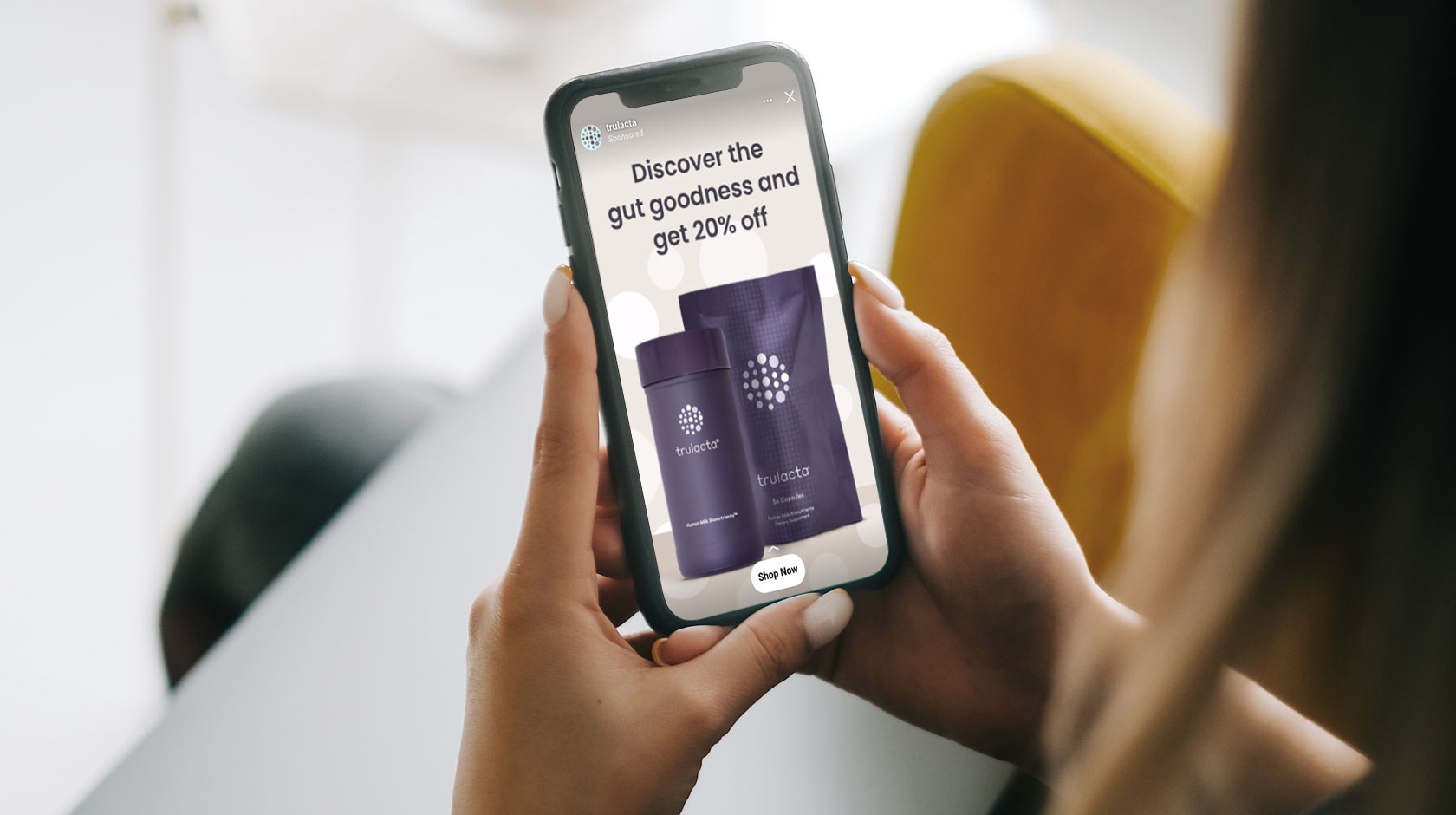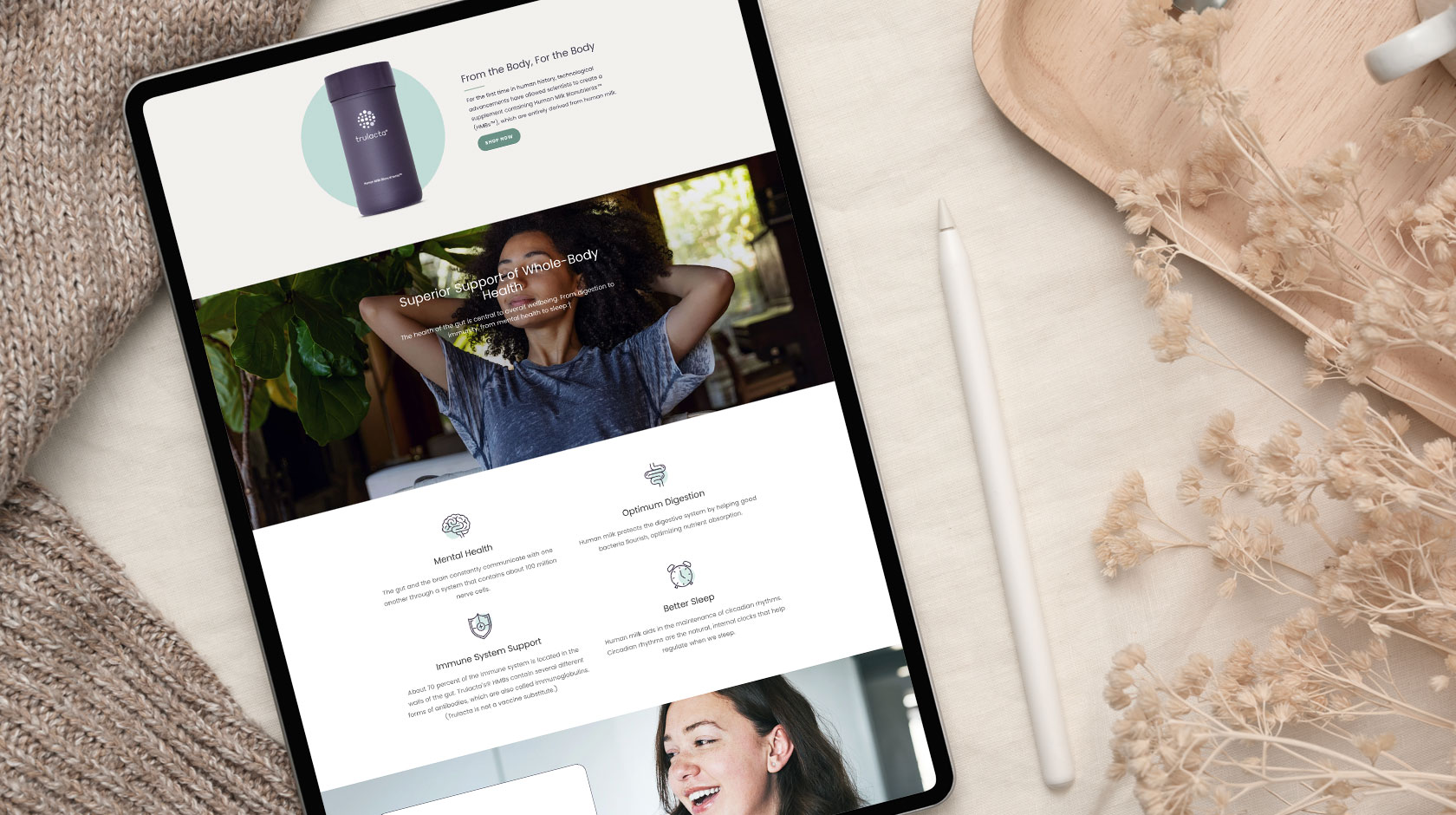Summary
How a B2C e-commerce company doubled their revenue in just 3 months
Our client, Adventa Bioscience, an innovative biotech firm, launched Trulacta, a unique first-of-its-kind supplement product with multiple health benefits available for consumer purchase and subscription via a B2C e-commerce site. After the initial product launch, Adventa was driving decent traffic to the website through paid media channels, but traffic was not converting to sales. They needed a strategy for increasing purchases without increasing the paid media spend.
Through an iterative marketing process focused on continuous improvement, we were able to rapidly test creative, messaging, and UX design across marketing channels to identify audience segments, optimize content to resonate with those audience segments, and increase our ability to convert those audiences more efficiently.
Services
- Integrated Digital Marketing
- Data Strategy & Analytics
- Iterative Marketing
- Conversion Rate Optimization Strategy
- Paid Media
- Creative
- Landing Page UX Design
- Project Management






